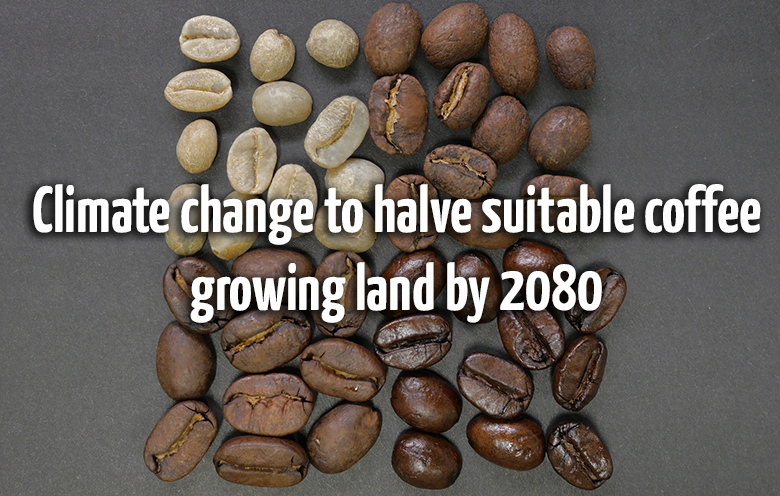Climate change to halve suitable coffee growing land by 2080

A recent report published by The Climate Institute makes for stark reading, especially for those of us who value the sometimes underappreciated coffee bean.
Approximately half of the world’s usable coffee farming land is likely to become unsuitable for plantation by 2050 due to increasing global temperatures, disease and pests.
The report also suggests that wild coffee varieties such as Arabica, could become extinct within the next 70 years unless we tackle climate change.
Around 120 million people worldwide work directly in the coffee industry, from farmers, pickers, transporters, roasters, baristas and more all under threat.
Climate change has helped harmful crop diseases and fungi to thrive, including coffee leaf rust. Attacking crops and destroying livelihoods in the process.
During 2012, South and Central America an decrease in production of 2.7 million bags and cost those affected around £400 million. Coffee leaf rust is now spreading and able to survive in mountainous areas of Columbia where it was once too cool for it to survive.
It’s not just diseases and infestation that could become a problem, flavour and of course prices are likely to be directly affected, with our favourite hot drink ingredient becoming more and more scarce.
Climate change predicted to halve coffee-growing area that supports 120m people https://t.co/PcIfxQaLW4
— Fairtrade Foundation (@FairtradeUK) August 30, 2016
With most of the world’s 25 million coffee farmers owning smallholdings, they may not have the individual capacities to adapt growing methods to a hotter world, with climate and market volatility conspiring against them.
It should come as no surprise that the areas most affected are coincidentally some of largest coffee growing regions on the planet. Honduras, Nicaragua, Vietnam and Guatemala, for instance, have ranked in the top-10 for climate-related damages since the early 90s.
But what can we do to help?
For most coffee drinkers, one of the first steps we should take is to learn about the challenges that these areas and coffee producers will face. Take a look at what Fairtrade organisations and the like are doing to help.
We can also look at carbon neutral coffee options, or sustainable growing plantations for our coffee.
Finally we can all demand that action is taken by all parties to combat this threat to our humble cup of coffee.
We are committed to offering coffee that is produced by fair and carbon neutral means, check our our full range of Fairtrade and Rainforest Alliance certified coffee and taste the difference for yourself.
